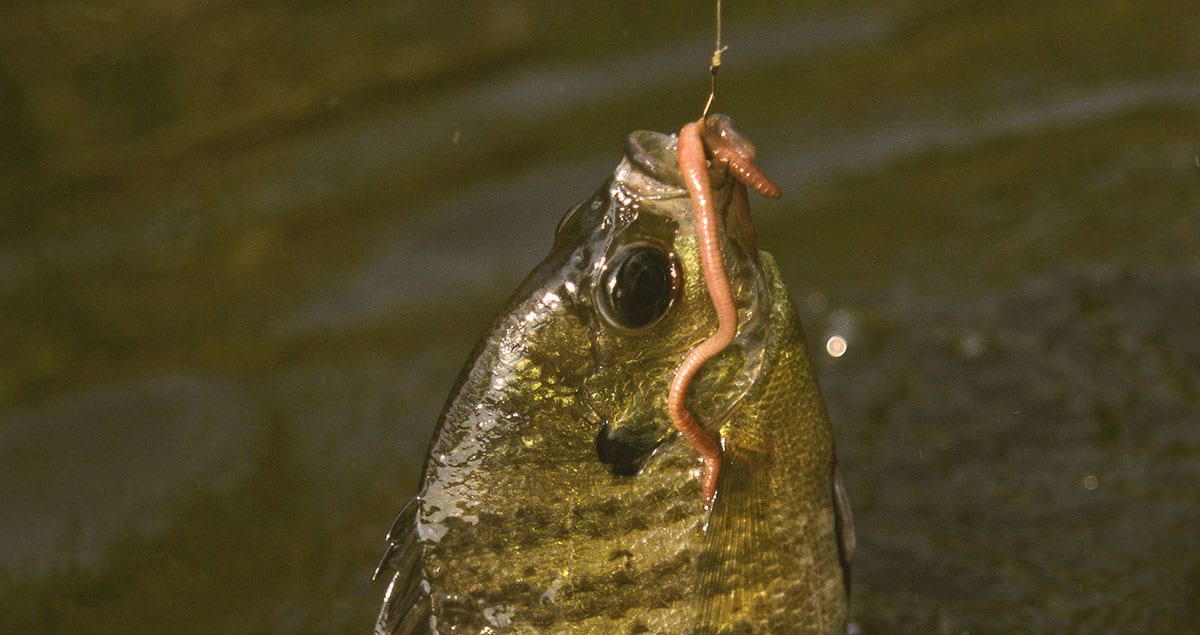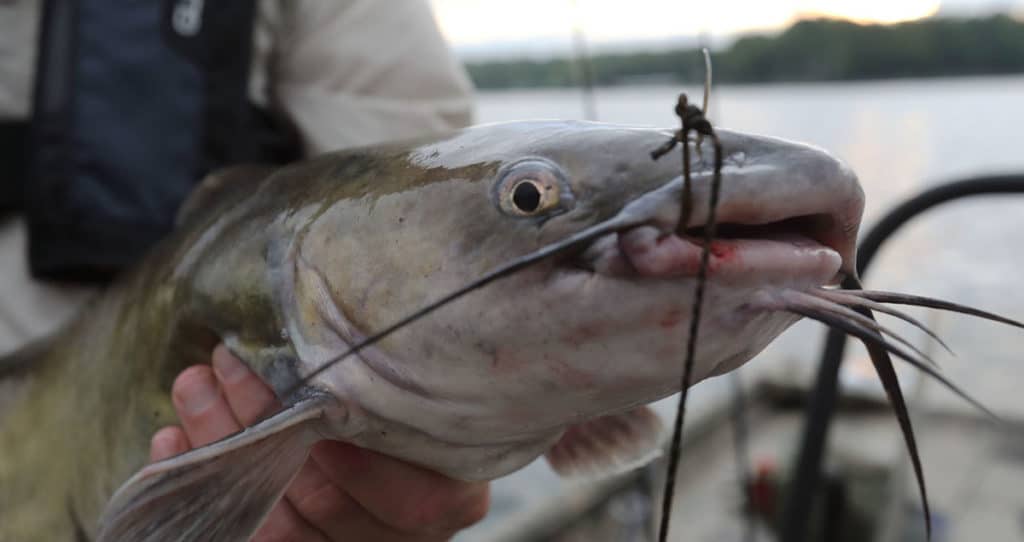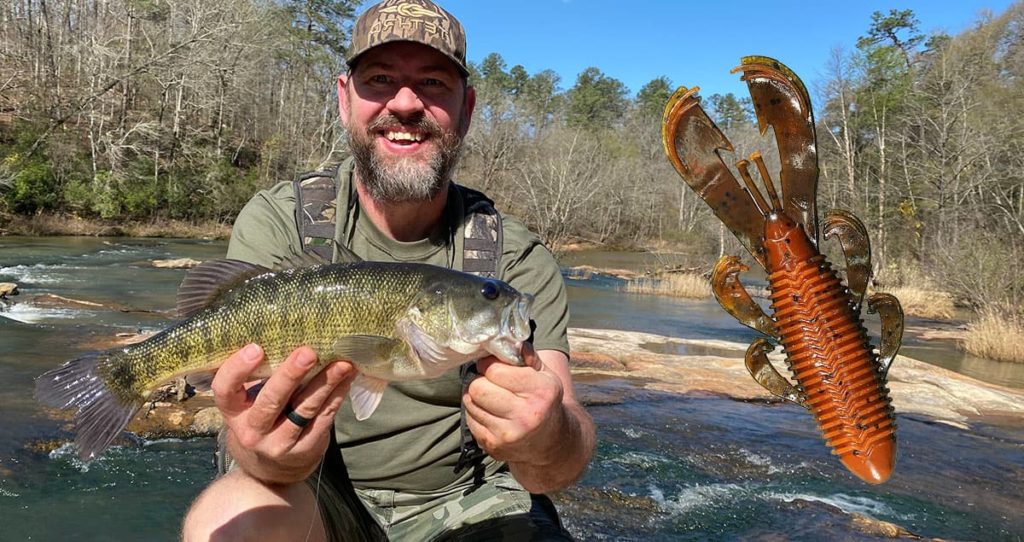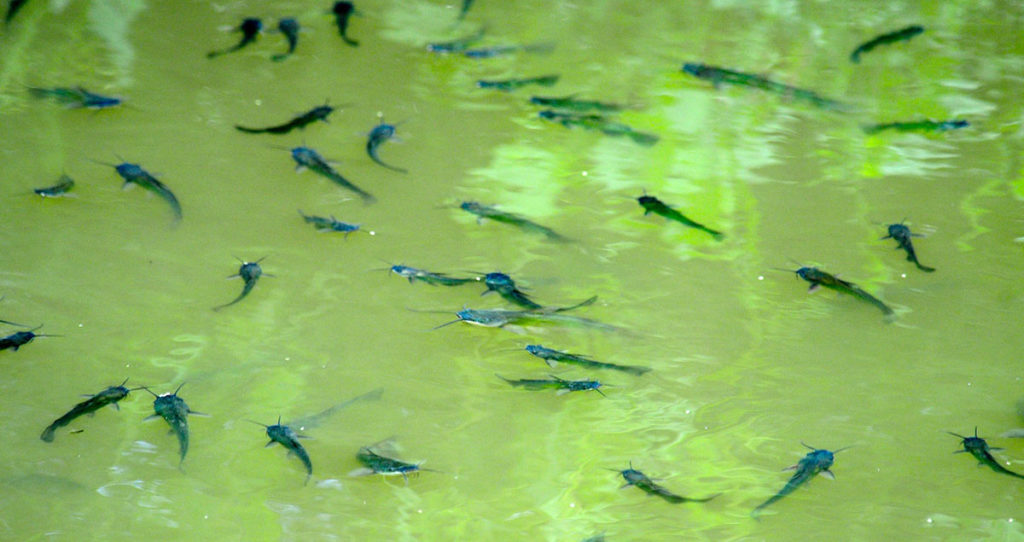Choosing the right hook is an important, but often overlooked aspect of bluegill fishing. It can impact your ability to set the hook, as well as how well the fish stays on the hook. Correct hook selection can also lessen the chances of the fish swallowing the hook and causing damage or death to a fish you may plan to release.
With that in mind, let’s take a look at the different types and sizes of hooks for bluegill fishing, which hooks work best for certain types of bluegill bait, and what considerations to make when choosing the right one for your setup.
Hook Terminology
Eye – the eye of the hook is the small, round circle at the top end of the hook where you tie your fishing line.
Shank – the shank is the long, often straight part of the hook between the eye and the bend.
Bend – the bend of the hook, as the name implies, is where the hook forms a U shape at the bottom.
Point – the point is the sharp end of the hook that pierces the fish’s mouth.
Barb – the barb is the sharp projection opposite of the point that keeps fish from coming off the hook.
Gap – the gap is the distance between the point of the hook and the shank.
Styles of Hooks
Fishing hooks come in a wide variety of shapes and sizes. Fortunately for bluegill fishing, there are really only a few types of hooks you need to know: bait holder hooks, circle hooks, aberdeen hooks, and carlisle hooks. While the names may not be familiar to you, you’ll probably recognize the common shapes of these hooks.
Bait Holder Hooks
As the name implies, bait holder hooks are designed with one primary function in mind — keep your bait on the hook! They do this with small barbs along the shank of the hook which keep your bait from sliding off.
While the bait holder hook is effective at what it’s designed for, those barbs can cause additional damage to a fish when removing the hook from its mouth. If you plan on releasing some of the fish you catch, then you may want to consider one of the other hook options.
Circle Hooks
Circle hooks have a unique shape designed to hook fish in the corner of the mouth. As the name implies, instead of being the typical “J” shape, the bend on a circle hook sweeps around and points back toward the shank of the hook. The unique design reduces gut hooking and increases the odds of a released fish surviving.
The downside to circle hooks is that they take some time to get used to. You don’t want to set the hook in the same way you would with a traditional hook. Instead, you have to allow the fish to take the bait and then set the hook using steady pressure.
Aberdeen Hooks
When I think of all the bluegill fishing I did growing up, it’s the Aberdeen hook that I remember using most. And it’s still my go-to for panfish. The Aberdeen hook is your traditional “J” shaped hook with a relatively long shank. The wire used for Aberdeen hooks is thin, which minimizes damage to the fish, and allows the hook to bend rather than break your line if you get it hung up in brush.
Carlisle Hooks
The Carlisle hook is very similar to the Aberdeen hook, but often with a longer shank and a more narrow bend. You’ll sometimes see them referred to as a cricket hook, but the long shank also makes it perfect for threading on worms. The biggest benefit to the Carlisle hook is that the narrow bend helps to keep your bait on the hook.
Best Size Hook for Bluegill
Hook size is another important factor when choosing the best hook for bluegill fishing. Choosing the correct hook size is critical to ensuring you’re able to set the hook, ensuring the fish stays on the hook, and ensuring you don’t end up killing a fish you intended to release.
Hook sizing can be a little confusing as there is no industry standard. That means that two hooks labeled the same size from two different manufacturers may not be the same size. In general, the smaller the number, the larger the hook. So a size 4 hook is much larger than a size 10 hook. Once you get to a size 1 hook the numbers then go to 1/0 (pronounced “one aught”), 2/0, 3/0, etc. So a 4/0 is bigger than a 3/0 and smaller than a 5/0.
Not confusing at all, huh?
The good thing for bluegill anglers is that they really only need to know and use a few hook sizes. In most cases, you’ll be using a hook somewhere between size 2 and size 10, with a size 6 hook being ideal.
Research on hook size out of Wisconsin found that large hooks (size 2 to 1/0) are more likely to hook a fish in the eye, and small hooks (sizes 10 to 14) were more likely to be swallowed, resulting in a gut hook. Size 6 hooks were found to be most effective in reducing the chances of fish injury or death.
Summary
When it comes to catching bluegill and other panfish, choosing the right hook is an important part of tackle selection. And while there is no single hook that is always the best choice, my hope is that this article will help you choose the right hook for your specific circumstances. If all else fails, you can’t go wrong with a size 6 Aberdeen!





![Which Fish Eat Bluegill, Sunfish, and Other Bream? [Answered]](https://huntfishsouth.com/wp-content/uploads/2022/12/bass-eats-bluegill-1024x542.jpg)

